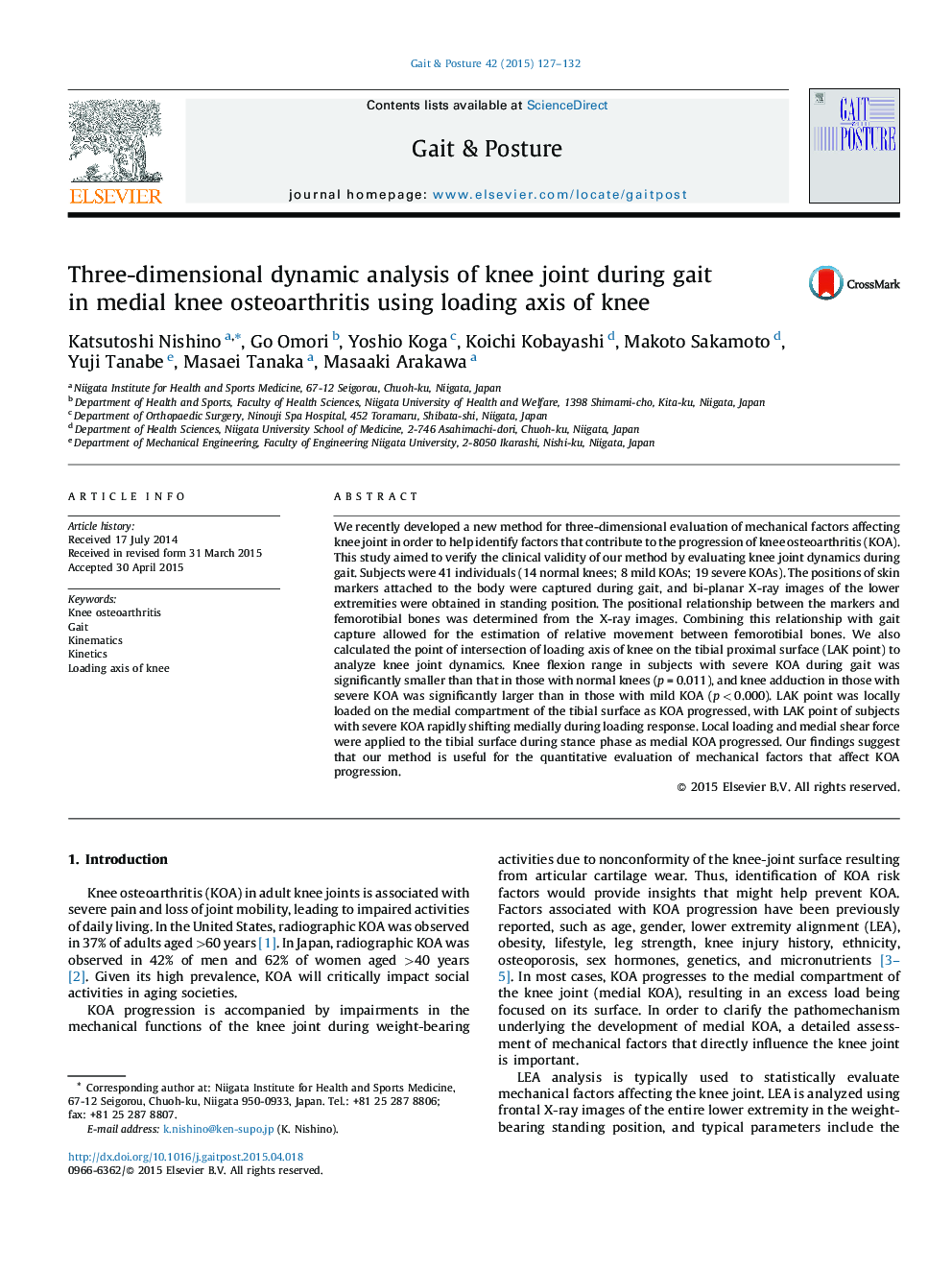| کد مقاله | کد نشریه | سال انتشار | مقاله انگلیسی | نسخه تمام متن |
|---|---|---|---|---|
| 6206013 | 1265637 | 2015 | 6 صفحه PDF | دانلود رایگان |
- We have developed a method to analyze mechanism of knee osteoarthritis (KOA).
- Patient-specific information from standing X-ray and CT is applied to gait analysis.
- Medial movement of knee joint during gait is started from mild KOA.
- Local loading on tibial proximal surface during gait is occurred in severe KOA.
- Our method is helpful for recovery and conservation of activities of daily living.
We recently developed a new method for three-dimensional evaluation of mechanical factors affecting knee joint in order to help identify factors that contribute to the progression of knee osteoarthritis (KOA). This study aimed to verify the clinical validity of our method by evaluating knee joint dynamics during gait. Subjects were 41 individuals (14 normal knees; 8 mild KOAs; 19 severe KOAs). The positions of skin markers attached to the body were captured during gait, and bi-planar X-ray images of the lower extremities were obtained in standing position. The positional relationship between the markers and femorotibial bones was determined from the X-ray images. Combining this relationship with gait capture allowed for the estimation of relative movement between femorotibial bones. We also calculated the point of intersection of loading axis of knee on the tibial proximal surface (LAK point) to analyze knee joint dynamics. Knee flexion range in subjects with severe KOA during gait was significantly smaller than that in those with normal knees (p = 0.011), and knee adduction in those with severe KOA was significantly larger than in those with mild KOA (p < 0.000). LAK point was locally loaded on the medial compartment of the tibial surface as KOA progressed, with LAK point of subjects with severe KOA rapidly shifting medially during loading response. Local loading and medial shear force were applied to the tibial surface during stance phase as medial KOA progressed. Our findings suggest that our method is useful for the quantitative evaluation of mechanical factors that affect KOA progression.
Journal: Gait & Posture - Volume 42, Issue 2, July 2015, Pages 127-132
